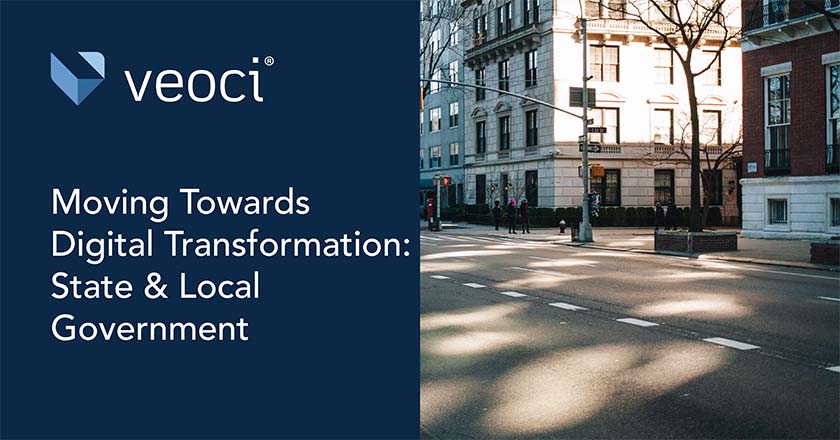People have often joked about the government being behind the technological curve, regardless of how true the statement is. And it’d be dishonest to say governments haven’t incorporated technology into operations. Many have welcomed the new perspective in some way. But most governments can do more, and given the current state of technology, those entities should embrace a digital transformation of operations.
An overhaul like digital transformation is always easier to ask for than it is to deliver. So let’s explore what digital transformation for state and local government means, what it looks like, and some of the ideas needed to make it all work.
Technology and the Government
The lumbering nature of bureaucracy hasn’t always been a detriment. Historically, the many checks and balances baked in processes stopped hasty plunges into new partnerships and technology. The standard keeps agencies and other bodies from walking into data leaks and unsecure technology at the cost of staying a few strides behind the private sector.
Is that cautionary approach still important? Technology has become an integral part of daily life and the processes that keep every aspect of society running. We now accept the risks of technology in exchange for the benefits it imparts.
Digital transformation for governments is a growing trend. A younger workforce is making its way into positions with more power in shaping the nature of operations, and with that movement comes a higher comfortability with and fluency in technology.
The idea is slowly sticking. More and more governments at all levels are bringing technology into their operations and letting the capabilities of innovative hardware and software play a larger role. IT spending for state and local governments has grown steadily from 2017 to 2021, reaching a total of $118.7B in 2021.
Fully-fledged Digitization
Even the steep investments across local and state governments over the past five years years are hard to qualify as digital transformation without more context. More funds, new software, and fresh hardware help bolster a governing body’s digital and technological footprint, but digital transformation is less about expanding that footprint and more about changing it altogether.
Digital transformation is making operations virtual and employing technology to increase efficiency. EOCs have been a leader in this space. Many EOC managers and their teams use a platform through the course of emergency management and daily operations. Cornerstone operations like mass notification, planning, and plan maintenance many EOCs have offshored to virtual platforms, and many others have implemented solutions that handle the essential operations and pile on nice-to-haves like data intake and real-time communications between team members.
Some EOCs still call in their stakeholders, but doing this is more of a formality than a weighted choice. Platforms let EOC teams operate virtually from anywhere. EOCs have gone as digital as they can, and governments should follow suit.
Undergoing digital transformation is more than just adapting a piece of software. It’s turning to technology, recognizing its potential in operations, transitioning operations into a more efficient digital workflow, and continually improving the process through captured data.
Why Digital Transformation?
Making the jump is a large financial undertaking and doing so can’t be done without some justification. So why should governments start the digital transformation of all operations?
Operational Moneyball
Efficiency is a constant factor in reshaping workflows and processes across both the private and public sectors. This principle is behind the digital transformation governments are now working through, and this time its a real tangible goal.
Take a look at the Town of Trumbull, located in Connecticut. After struggling with a manual system powered by spreadsheets, the town moved to a digital solution built in Veoci. It expanded the efficiency of the 311 reporting system and corresponding work order workflow. More importantly, the solution made the process more accessible to the townspeople and made their voices louder for the town.
The Value of Data
Technology skyrockets the availability of data. Platforms can capture information at every step of a process and feed it back to a team in various reports.
Digital transformation doesn’t leave any data behind. An flexible platform, one that assists in all daily government operations, can funnel numbers back to a team and ease out conclusions through robust reporting.
The Town of Trumbull has comprehensive reporting for its 311 and work order management through this solution as well. At any time, personnel can explore the history of specific requests and identify growing trends in larger, aggregate reports.
Adapt Alongside Innovations and Trends
Smartphones and other mobile devices seem as if everything in the world is accessible, and the market and its innovators are slowly inching towards making this true. The Pew Research Center found that 81% of U.S. adults have a smartphone. Some reports also indicate most internet users are on phones and other mobile devices.
If a local or state government wants to ensure it can field the thoughts and requests of its citizens, digital transformation is a step that has to be taken.
When we take another look at the Town of Trumbull, digital transformation helped the town establish a reliable and effective line into its community. A flexible platform will keep objects like forms responsive, and nurturing a positive experience for citizens can greatly increase their participation and willingness to voice their concerns.
More on Digital Transformation
Digital transformation is no small topic. Come back to the Veoci Blog soon to get more insights from our team and how your team can kickstart the process.








